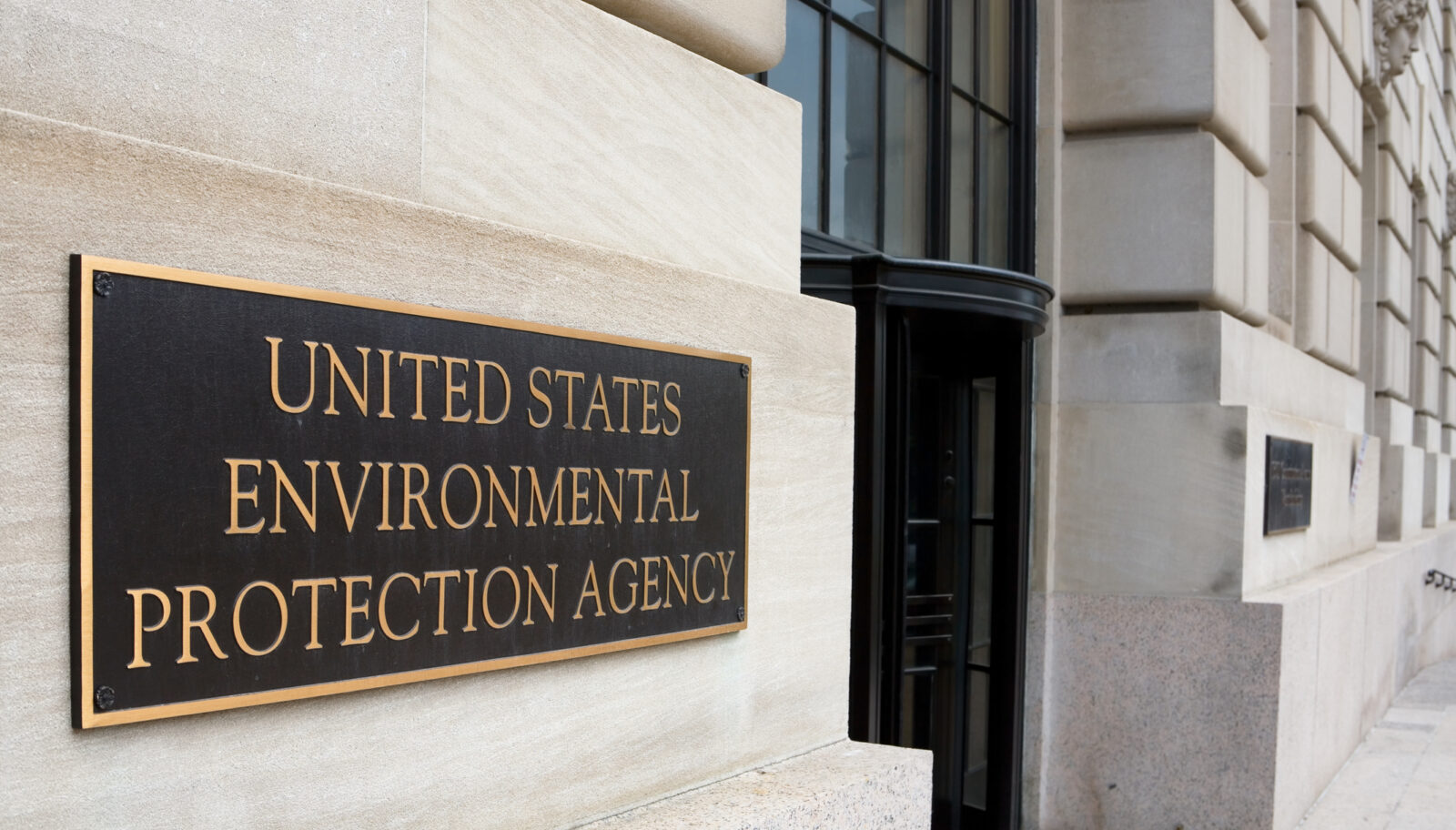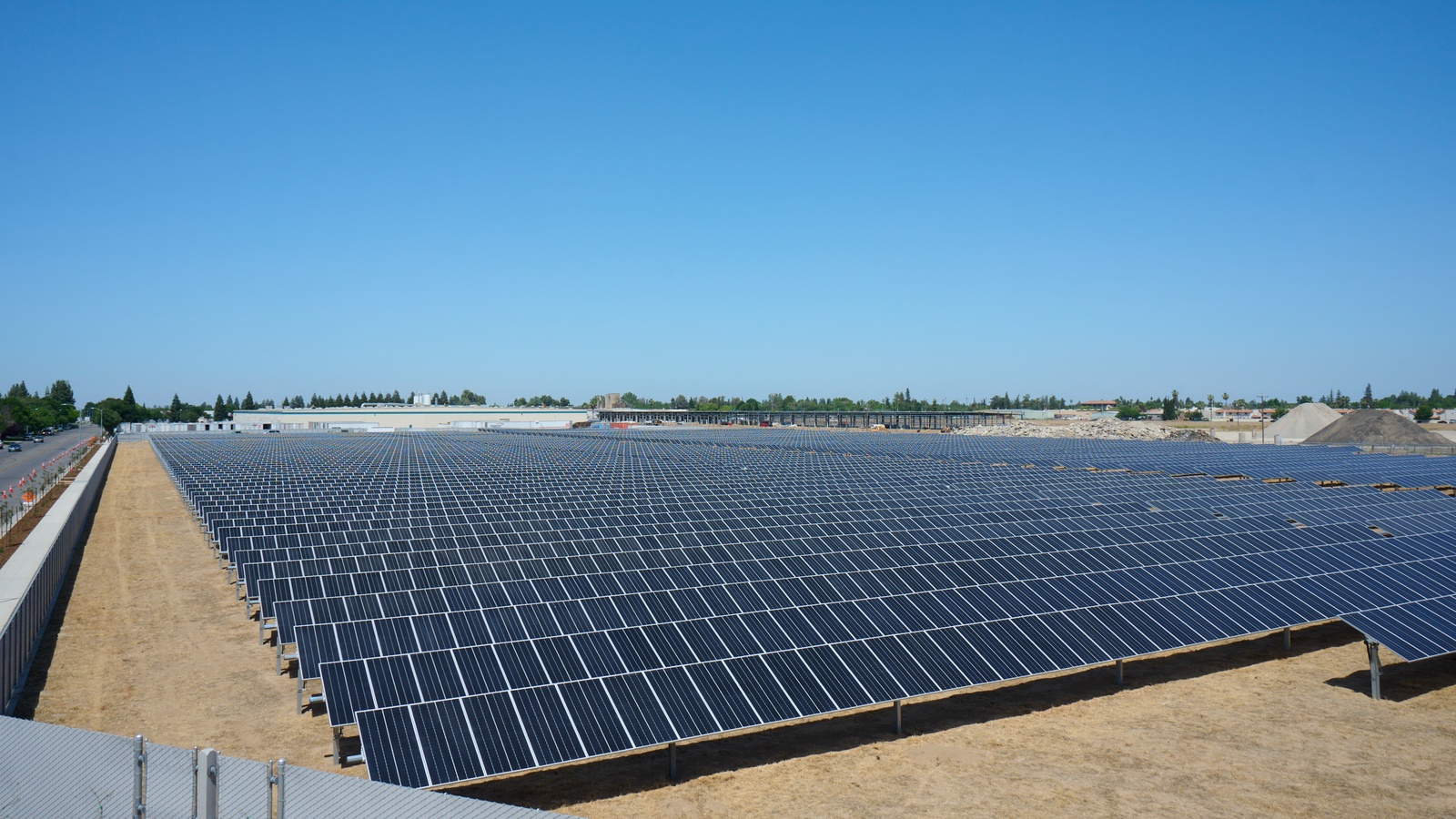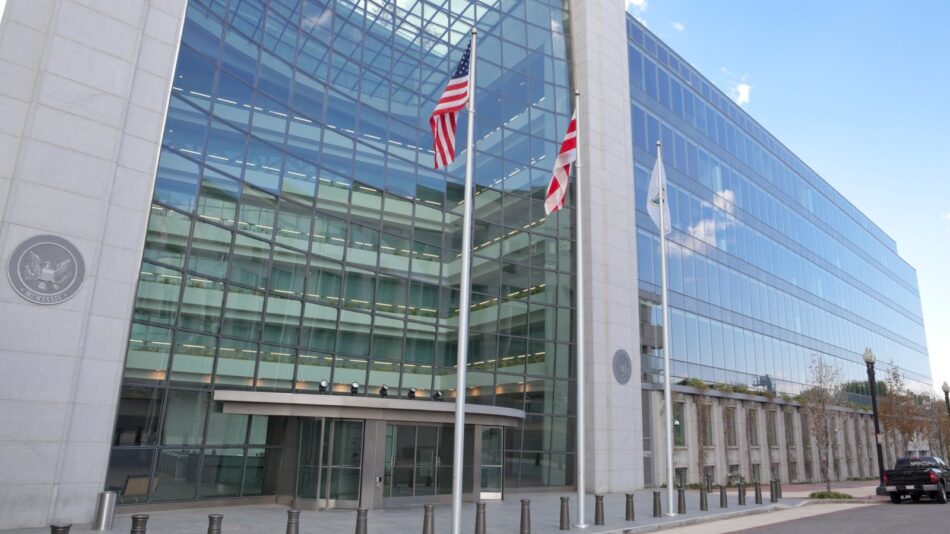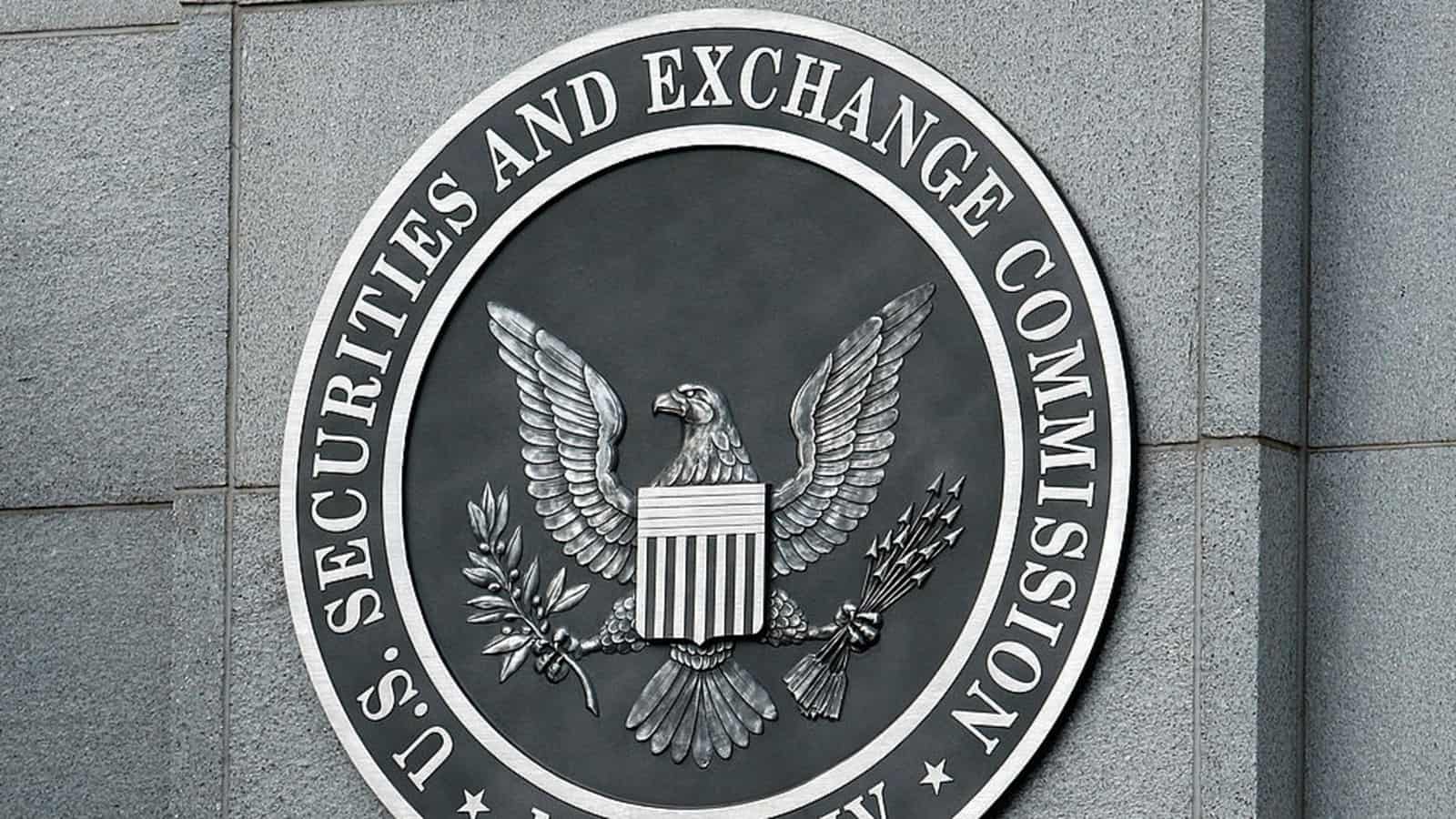NAM to FAR Council: Rescind Proposed Climate Rule

A draft rule to force federal contractors to make specific and detailed climate disclosures is burdensome, unrealistic and costly to manufacturers. It should be rescinded completely, the NAM told the Federal Acquisition Regulatory Council this week.
The background: In November, the FAR Council—which is composed of the Defense Department, the General Services Administration and NASA—proposed a rule to require climate disclosures from federal contractors, many of whom are manufacturers. The proposed rule would require contractors with more than $50 million in annual federal contract obligations to:
- Disclose their greenhouse gas emissions, including so-called Scope 3 emissions (those attributable to the suppliers and customers throughout a company’s value chain);
- Set targets to reduce their greenhouse gas emissions within a decade (including Scope 3 emissions) based on standards set forth by a third-party nonprofit organization, the Science-Based Targets initiative, and get the targets validated by SBTi; and
- Disclose their climate-related financial risks pursuant to a framework written by a second nonprofit group, the Task Force on Climate-Related Financial Disclosures, and submit those risk disclosures to yet another nonprofit (CDP, formerly the Carbon Disclosure Project).
Why it’s a problem: Compliance with the proposed rule would be difficult, if not wholly unfeasible, prohibitively expensive and time-consuming, NAM Managing Vice President of Tax and Domestic Economic Policy Chris Netram told the FAR Council. It would also impact small businesses within federal contractors’ supply chains given the rule’s focus on Scope 3 disclosures and target setting.
- “The proposed rule would impose significant costs on manufacturers as they work to meet the complex—and in many cases impractical or impossible—requirements of the rule,” Netram said.
- “As a result, manufacturers providing critical goods and services to the federal government, as well as the businesses throughout their supply chains, will be directly and adversely impacted … The national security of the United States could likewise be harmed, as critical contractors could be disqualified from supplying the military, and the required disclosures could expose sensitive information to America’s adversaries.”
What can be done: The FAR Council should rescind the proposed rule in its entirety, Netram said, but if it is intent on making changes, “it must re-propose a rule with substantial revisions to make its requirements more cost-effective and workable for federal contractors and more narrowly tailored to the actual climate-related risks to which the federal government is exposed.”
NAM Pushes Back on Harmful New Air Regulations

Manufacturers have long led the way in efforts to reduce air pollution and improve air quality. Yet, new proposed regulations from the federal government will work against these efforts instead of bolstering them, stymying critical progress and destabilizing economic growth at a time when both are more important than ever.
The challenge: The Environmental Protection Agency is considering a new rule that would impose stricter air standards on particulate matter known as PM2.5 (i.e., particles that measure two and a half micrometers or less in diameter). This rule would enact significant top-down restrictions, forcing manufacturers to change their operations abruptly and without any support.
The reality: For years, manufacturers across all sectors have been developing smart, innovative ways to use energy, water and other resources more sustainably—all while boosting economic growth and creating good jobs at the same time.
- Today, manufacturing in the U.S. is cleaner and greener than at any other time in history, largely due to a revolution in how manufacturers produce, use and recycle energy and resources.
- Across the board, levels of major pollutants have declined dramatically over the past few decades. Thanks to existing regulations and a culture of innovation, the U.S. is far outpacing global competitors in environmental stewardship.
By the numbers: According to the EPA, the U.S. reduced six common pollutants covered by National Ambient Air Quality Standards, including PM2.5, by 78% between 1970 and 2020. In fact, PM2.5 levels alone have dropped a full 44% since 2000.
The impact: These new regulations could be devastating for manufacturers and for the climate. Here are just a few of the negative repercussions:
- An additional regulatory burden on businesses will drain resources from innovative manufacturers, posing additional hurdles to the investment in research and development that fuels progress in energy efficiency and climate action.
- Making permitting harder could also jeopardize new clean energy projects that America needs to address climate change.
- The standards will hinder onshoring, resulting in continued manufacturing abroad—which is less clean than manufacturing in the U.S. The EPA’s proposal undercuts U.S. competitiveness and will not further the goal of global emissions reduction.
- New regulations could damage an already-slowing economy, increasing costs and constraining job growth at a time when Americans are grappling with record inflation.
Our view: Rather than imposing new and unnecessary obligations on manufacturers, the federal government should focus on enforcing the strong regulations that are already in place and give manufacturers the space to find better solutions.
- “The EPA’s announcement . . . [about reconsidering] the PM 2.5 standard will only further weaken an already slowing economy,” said NAM President and CEO Jay Timmons. “Let manufacturers do what they do best: innovate and deploy modern technologies to protect the environment, while creating jobs and strengthening the economy.”
NAM in action: The NAM is rallying manufacturers to speak out against the EPA’s proposal and calling on Congress to oppose these harmful regulations.
- Manufacturers can show their support by sending an email to decision makers in Washington, explaining the real impact of this damaging proposal and urging them to stand up against unnecessary regulations.
Join in: There is an EPA hearing to discuss the proposal on Feb. 21. To participate, be sure to sign up soon—the registration deadline is Feb. 16.
Manufacturers: Improving Air Quality Is a Top Priority; EPA Announcement Is the Wrong Approach
Washington, D.C. – Following the Environmental Protection Agency’s announcement that it will reconsider National Ambient Air Quality Standards for particulate matter, National Association of Manufacturers President and CEO Jay Timmons released the following statement:
“Improving air quality in the U.S. is a priority for manufacturers, and we’ve worked for years to make progress in delivering some of the cleanest manufacturing processes in the world. Based on the EPA’s own data, air quality has improved by more than 30% over the past 20 years, even as production and energy consumption have increased.
“The EPA’s announcement today to reconsider the PM 2.5 standard will only further weaken an already slowing economy. It will push states and localities into a nonattainment designation, which will halt new investment, stop operations in some circumstances and cost jobs. Manufacturers are already concerned about the threat of a recession—62% believe that the U.S. will officially slip into a recession in 2023, according to the Q4 2022 NAM Manufacturers’ Outlook Survey released yesterday.
“Today’s announcement is the wrong approach. Let manufacturers do what they do best: innovate and deploy modern technologies to protect the environment, while creating jobs and strengthening the economy.”
-NAM-
The National Association of Manufacturers is the largest manufacturing association in the United States, representing small and large manufacturers in every industrial sector and in all 50 states. Manufacturing employs more than 12.9 million men and women, contributes $2.77 trillion to the U.S. economy annually and accounts for 55% of private-sector research and development. The NAM is the powerful voice of the manufacturing community and the leading advocate for a policy agenda that helps manufacturers compete in the global economy and create jobs across the United States. For more information about the NAM or to follow us on Twitter and Facebook, please visit www.nam.org.
Operating on Sunshine: Sealed Air Invests Big in Solar

For Sealed Air Corporation, the $1 million annual savings it will realize from its recent investment in an 11-acre solar farm is just a perk that goes along with doing what’s right.
Toward a goal: “We always have sustainability in mind with everything that we do, whether it is a new product or a new facility,” said Sealed Air President of the Americas Tobias Grasso. “We always ask, ‘What is this bringing to us?’ and ‘How is this advancing our mission to leave our world better than we found it?’ Because we have a stated goal to be net-zero carbon neutral in our operations by 2040, we want to make sure that all our investments are in line with that strategy.”
- Earlier this year, a $9 million solar installation at Sealed Air’s Madera, California, manufacturing facility began generating electricity—at a rate capable of fulfilling 98% of the plant’s electricity needs, according to company calculations.
- The solar farm is integrated into the legacy power system so that system has a backup energy source when needed.
The right site: Sealed Air, the maker of the iconic Bubble Wrap® original cushioning and numerous other automation, packaging and digital printing solutions, started making plans for the 8,975-solar-panel farm in 2020. It chose the Madera location as the site for several reasons.
- “We have fairly extensive energy needs for that facility,” Grasso said. “And we had the available land and a good number of hours [of available sunlight] to provide the solar energy.”
- The manufacturer partnered locally with a team from TotalEnergies—a French company that recently acquired SunPower Commercial and Industrial Solutions—on the project.
The impact: Though the company got its solar installation up and running in less than two years, its effect on the environment will be long-lasting and far-reaching.
- The solar panels will prevent 5,000 metric tons of carbon dioxide emissions in just their first year in operation.
- Over the course of 15 years, that’s the greenhouse gas emissions equivalent of driving 15,000 cars for one year, Grasso said.
Solar-power advice: Manufacturers with the right energy needs, land and daily hours of sunlight could benefit from investment in their own solar installations, according to Grasso.
“First, you have to look at the dimensionality of your power needs; you have to look at the economics,” he said. “It’s a good idea to have a partner like TotalEnergies because they can help you through their experience so you model it the right way.”
Manufacturers: Court’s Decision Affirms EPA’s Authority to Issue Appropriate Greenhouse Gas Regulations
Washington, D.C. – Following the Supreme Court’s 6–3 decision in West Virginia vs. EPA, National Association of Manufacturers President and CEO Jay Timmons released the following statement:
“Manufacturers share a deep commitment to protecting our planet and our people, and manufacturing innovation holds the key to solving the generational challenge of climate change. The court’s decision affirms the Environmental Protection Agency’s authority to issue appropriate greenhouse gas regulations while providing a reminder that the agency must stay within the guardrails delegated by Congress. As some of the largest electricity consumers and as electricity generators, manufacturers are ready to work with the EPA to deliver innovative and balanced solutions that protect our environment and our competitiveness as it considers next steps.”
Background: Earlier this week, the NAM along with 42 state partners sent President Biden a letter highlighting the importance of affordable, reliable electricity for manufacturers to remain competitive. It signals manufacturers’ eagerness to work with policymakers on the important decisions and planning surrounding the future of the electrical grid and broader energy policy.
-NAM-
The National Association of Manufacturers is the largest manufacturing association in the United States, representing small and large manufacturers in every industrial sector and in all 50 states. Manufacturing employs more than 12.7 million men and women, contributes $2.71 trillion to the U.S. economy annually and accounts for 58% of private-sector research and development. The NAM is the powerful voice of the manufacturing community and the leading advocate for a policy agenda that helps manufacturers compete in the global economy and create jobs across the United States. For more information about the NAM or to follow us on Twitter and Facebook, please visit www.nam.org
NAM Urges Changes to Climate Disclosures Rule

As the Securities and Exchange Commission considers a prescriptive rule that imposes significant and burdensome climate-related disclosure obligations on public companies, the NAM is pushing back. It is fighting for critical changes that will support manufacturers’ leadership on climate change.
The background: Manufacturers have long been leaders on climate solutions, working to create the technologies and processes needed to combat climate change while also providing material information about their climate-related efforts to investors.
- But a recent rule proposed by the SEC would mandate that companies, large and small, report reams of complex climate-related information, even when that information may not have any impact on their financial performance or operations.
The rule: The proposed rule, which the SEC released in March, would require qualitative descriptions of companies’ climate-related risks and strategies as well as quantitative reporting of their greenhouse gas emissions and any climate-related impacts on their financial statements.
- The result would be an unworkable framework that does not align with current practices—imposing an enormous burden on manufacturers across the country.
- Additional information can be found about the rule here and about the NAM’s engagement with the SEC on climate disclosures here.
The response: The NAM has laid out a series of necessary changes that the SEC must make to reduce the compliance costs and liability risks associated with the rule’s requirements. Our recommendations will align the rule more closely with current climate reporting practices—decreasing burdens on public companies and increasing information utility for investors. Specifically, the NAM is calling on the SEC to:
- Delay annual GHG emissions reporting, granting manufacturers time to collect and verify data for a midyear report (rather than the proposed February deadline).
- Strike disclosure of Scope 3 emissions, which requires tracking emissions data through the supply chain. While some manufacturers are already working to understand these emissions, the data collection, estimation and reporting methodologies are still evolving. At a minimum, the SEC should provide more flexibility for companies subject to the Scope 3 requirement.
- Rescind accounting changes that would require climate impact analyses of companies’ consolidated financial statements on a line-by-line basis.
- Adjust the climate-related risk disclosures and Scope 1 and Scope 2 emissions reporting requirements to make the provisions less prescriptive and more aligned with existing company practices.
- Fine-tune the guidelines for reporting on climate-related goals to avoid penalizing companies that set ambitious targets.
- Remove requirements that companies disclose competitively sensitive information about the internal tools they use to understand and plan for climate risks, scenarios and activities.
The last word: “The SEC’s climate rule as written would be harmful for both large and small manufacturers and unhelpful for investors,” said NAM Senior Director of Tax and Domestic Economic Policy Charles Crain. “The NAM is committed to supporting our members in their efforts to combat climate change and inform investors about this critical work, and the recommendations we’ve offered present an important step toward that goal.”
Watch: NAM President & CEO Jay Timmons joined CNBC to discuss the impact of the proposed rule.
NAM Urges Changes to Climate Disclosures Rule

As the Securities and Exchange Commission considers a prescriptive rule that imposes significant and burdensome climate-related disclosure obligations on public companies, the NAM is pushing back. It is fighting for critical changes that will support manufacturers’ leadership on climate change.
The background: Manufacturers have long been leaders on climate solutions, working to create the technologies and processes needed to combat climate change while also providing material information about their climate-related efforts to investors.
- But a recent rule proposed by the SEC would mandate that companies, large and small, report reams of complex climate-related information, even when that information may not have any impact on their financial performance or operations.
The rule: The proposed rule, which the SEC released in March, would require qualitative descriptions of companies’ climate-related risks and strategies as well as quantitative reporting of their greenhouse gas emissions and any climate-related impacts on their financial statements.
- The result would be an unworkable framework that does not align with current practices—imposing an enormous burden on manufacturers across the country.
- Additional information can be found about the rule here and about the NAM’s engagement with the SEC on climate disclosures here.
The response: The NAM has laid out a series of necessary changes that the SEC must make to reduce the compliance costs and liability risks associated with the rule’s requirements. Our recommendations will align the rule more closely with current climate reporting practices—decreasing burdens on public companies and increasing information utility for investors. Specifically, the NAM is calling on the SEC to:
- Delay annual GHG emissions reporting, granting manufacturers time to collect and verify data for a midyear report (rather than the proposed February deadline).
- Strike disclosure of Scope 3 emissions, which requires tracking emissions data through the supply chain. While some manufacturers are already working to understand these emissions, the data collection, estimation and reporting methodologies are still evolving. At a minimum, the SEC should provide more flexibility for companies subject to the Scope 3 requirement.
- Rescind accounting changes that would require climate impact analyses of companies’ consolidated financial statements on a line-by-line basis.
- Adjust the climate-related risk disclosures and Scope 1 and Scope 2 emissions reporting requirements to make the provisions less prescriptive and more aligned with existing company practices.
- Fine-tune the guidelines for reporting on climate-related goals to avoid penalizing companies that set ambitious targets.
- Remove requirements that companies disclose competitively sensitive information about the internal tools they use to understand and plan for climate risks, scenarios and activities.
The last word: “The SEC’s climate rule as written would be harmful for both large and small manufacturers and unhelpful for investors,” said NAM Senior Director of Tax and Domestic Economic Policy Charles Crain. “The NAM is committed to supporting our members in their efforts to combat climate change and inform investors about this critical work, and the recommendations we’ve offered present an important step toward that goal.”
Manufacturers: New Water Permitting Proposal Falls Short of Needed Certainty
Washington, D.C. – Following the introduction of the Environmental Protection Agency’s proposed Water Quality Certification Improvement Rule, National Association of Manufacturers Vice President of Energy and Resources Policy Rachel Jones released the following statement:
“The EPA’s new water permitting proposal falls short of providing the certainty that manufacturers in America desperately need from their local, state and federal regulators, and if the EPA doesn’t get the regulations right here, American families will continue to feel the consequences of rising construction costs and delayed infrastructure investments. While we are pleased that this proposal provides some clarity on the scope of reviews and sets timelines to increase predictability, it just doesn’t go far enough to stop activists from abusing what were intended to be important water protections.
“Manufacturers in America have endured red tape and permitting delays for decades, and manufacturers know what happens when the vaguely worded Section 401 is used as an excuse to block critical infrastructure: We lose out on modern manufacturing jobs. By setting clearer guidelines, the EPA could empower manufacturers to invest in our people and communities with confidence and to work with state leaders to protect our water and environment. The NAM will continue working with policymakers to improve this measure so that it can strengthen environmental stewardship while speeding infrastructure investment and expanding manufacturing here in the United States.”
-NAM-
The National Association of Manufacturers is the largest manufacturing association in the United States, representing small and large manufacturers in every industrial sector and in all 50 states. Manufacturing employs more than 12.7 million men and women, contributes $2.71 trillion to the U.S. economy annually and accounts for 58% of private-sector research and development. The NAM is the powerful voice of the manufacturing community and the leading advocate for a policy agenda that helps manufacturers compete in the global economy and create jobs across the United States. For more information about the NAM or to follow us on Twitter and Facebook, please visit www.nam.org.
NAM Mobilizes on SEC Climate Rule

As the U.S. Securities and Exchange Commission works to finalize a new rule requiring climate disclosures by public companies, the NAM is mobilizing to defend manufacturers.
The background: Manufacturers have long been leaders on climate solutions, working to create the products and technologies necessary to face the challenge of climate change.
- Manufacturers also regularly provide climate-related information to their investors, including via corporate sustainability reports, third-party reporting frameworks and SEC filings.
- At the beginning of the Biden administration, however, the SEC made clear that it was interested in creating a rule to enhance and standardize these disclosures.
- In the months since, the commission has taken steps toward that goal—and the NAM has stepped up to protect manufacturers.
In March 2021, the SEC issued a request for information on climate disclosures. The NAM responded, urging the SEC to adopt a flexible, principles-based framework that allows companies to provide investors with material information about climate risks in a consistent and comparable manner.
In September, the SEC’s Division of Corporation Finance issued new guidance calling into question companies’ existing climate disclosure practices—including the common practice of supplementing SEC filings with a sustainability or corporate social responsibility report.
- The NAM pushed back against the guidance, cautioning the division against setting new standards without a formal rulemaking process.
In October, the division released guidance drastically limiting the ability of companies to exclude climate-related shareholder proposals from the annual proxy ballot—even if those proposals are unrelated to a business’s operations.
- The NAM pushed back, emphasizing the importance of company-specific decisions for protecting manufacturers and their long-term shareholders.
The new rule: The SEC released a proposed rule in March that would significantly expand public companies’ climate disclosure obligations.
- First, the rule would require qualitative descriptions of companies’ climate-related risks and any efforts to respond to those risks.
- It also would require quantitative reporting of companies’ greenhouse gas emissions and institute a new mandate that companies conduct quantitative climate impact analysis within their consolidated financial statements.
- You can read more about the specifics of the rule here.
NAM in action: The NAM has spent the past several months connecting with manufacturers across the country to understand the real-world impact of the SEC’s proposal.
- Through a range of webinars, listening sessions and roundtables, we have been able to explain the proposed rule, gather vital feedback and map out the way forward.
What’s next: The NAM intends to provide comments to the SEC in June, highlighting provisions within the proposed rule that are impractical, costly, overly prescriptive, confusing for investors or not reflective of current climate disclosure practices.
- The NAM will call on the SEC to make targeted changes to its proposal to increase flexibility, focus on material information for investors and reduce costs, burdens and liability for companies.
What we’re saying: “Manufacturers are the leaders in America’s fight against climate change—and in order to continue that work, we need climate disclosure practices that support sustainability, rather than increasing costs for companies and confusing investors,” said NAM Senior Director of Tax and Domestic Economic Policy Charles Crain.
- “Any SEC climate disclosures rule needs to be less prescriptive, more flexible and solely focused on materiality in order to accurately reflect current practices.”
- “The bottom line is that a climate disclosures rule can’t just sound good; it has to actually work in the real world.”
NAM Joins Groups in Applauding Kigali Amendment Progress
Washington, D.C. – In response to the Senate Foreign Relations Committee passage of the Kigali Amendment, the National Association of Manufacturers, Air-Conditioning Heating and Refrigeration Institute, American Chemistry Council, The Alliance for Responsible Atmospheric Policy, and the U.S. Chamber of Commerce issued the following statement:
“The business community applauds the Senate Foreign Relations Committee for its bipartisan vote approving the Kigali Amendment for consideration by the full Senate. This is an important step in ensuring the U.S. joins this global effort while accessing international markets that will grow American jobs. It is a win for the economy, the environment, and U.S. leadership.”
-NAM-
The National Association of Manufacturers is the largest manufacturing association in the United States, representing small and large manufacturers in every industrial sector and in all 50 states. Manufacturing employs more than 12.5 million men and women, contributes $2.71 trillion to the U.S. economy annually and accounts for 58% of private-sector research and development. The NAM is the powerful voice of the manufacturing community and the leading advocate for a policy agenda that helps manufacturers compete in the global economy and create jobs across the United States. For more information about the NAM or to follow us on Twitter and Facebook, please visit www.nam.org.
